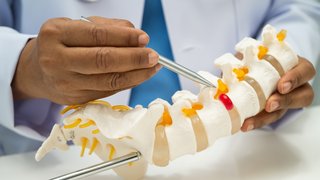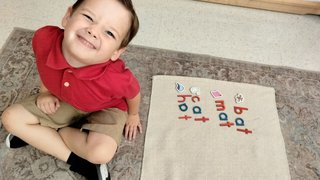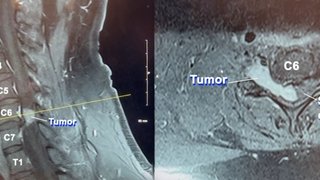Find relief from four common spinal deformities – often without surgery
September 21, 2017

Many of my spinal deformity patients have lived years – some their whole lives – with agonizing back pain for which they’ve been told repeatedly there is no effective cure. They are in so much pain that they invite the idea of complex surgery. But for 90 percent of these patients, surgery is not necessary.
My team and I see patients with chronic spine conditions that alter their quality of life, their ability to work, and the bodily functions most of us take for granted. Four of the most common – and most repairable – spinal deformities we treat are adult-onset scoliosis, failed back surgery syndrome, flat back syndrome, and kyphosis.
I’ll describe these conditions, how it’s possible to treat them without surgery, and what goes into the decision when we have to recommend surgery.
1. Adult-onset scoliosis
When I diagnose scoliosis in adults, they’re often taken aback. They ask, “Isn’t that what I got screened for by the grade-school nurse?”
It is, and it isn’t. Most American kids are screened for idiopathic adolescent scoliosis, which is a genetic condition that occurs in kids and teens. It’s more common in females, and it usually can be corrected if caught early.
Adult-onset scoliosis usually appears in people who are in their late 50s through their 70s. It’s caused by accelerated degeneration of the spine. As the joints and disks start to deteriorate with age, the spine falls out of balance, resulting in improper spine curvature. When you look at someone with adult-onset scoliosis from behind, the spine curves to the side in an “S” or “C” shape.
Scoliosis symptoms can include leaning to one side, back pain, and muscle deformity.
2. Failed back surgery syndrome
Failed back surgery syndrome (FBSS) is a condition that develops years after back surgery or over time as we age.
Some patients’ vertebrae simply have degenerated and fused together inappropriately as they’ve aged. The majority of my FBSS patients had surgery 20 or 30 years ago, before spine surgeons had the knowledge and tools we have today. As science continues to advance, we sometimes have to fine-tune areas surgeons didn’t fully understand before.
The spines of people with failed back surgery syndrome are no longer in a healthy alignment. Symptoms of FBSS include:
- Back pain outside the original surgery area
- Difficulty moving
- Numbness
- Sharp or stabbing back pain
3. Flat back syndrome
As the name implies, flat back syndrome occurs when the spine loses its natural curves. These curves help us keep our balance and bear the load of our bodies when we stand, walk, or run.
Flat back syndrome can develop due to:
People with flat back syndrome lose their spinal balance and tend to lean too far forward. This can make it hard to stand up straight without flexing the hips or bending the knees throughout the day, which is tiring. Patients often have neck or back pain from the strain of holding themselves upright.
- Degeneration of spinal disks as part of the aging process
- Fractures of the vertebrae, often due to osteoporosis (a weakening of the bones)
- Harrington spinal rods, which were used to treat scoliosis between the 1960s and 1980s
- Spinal instability after surgery to fuse vertebrae or decompress spinal nerves
4. Kyphosis, or kyphotic deformity
Kyphosis, or kyphotic deformity, is an excessive forward curvature of the back. A kyphotic deformity that affects the cervical spine in the neck can cause a person’s head to stick out too far forward and make it difficult to lift the head up. If the thoracic spine in the middle of the back is affected, the person will be stuck leaning too far forward.
The main symptoms of kyphosis are a hunched or rounded back, along with back or neck pain and difficulty standing straight. Other symptoms can include chest pain, trouble breathing, and weakness in the legs.
Kyphotic deformity can be caused by:
I refer to spinal deformities as common and complex. Many people suffer from spinal deformities, but they require complex, specialized treatment.
That said, most of my patients can find relief from their back and neck pain without surgery. Timing is an important factor. As with most health issues, ignoring or tolerating the pain won’t make it go away. The opposite will happen – your back will hurt more and the condition will become more difficult to treat.
If you experience back or neck pain, call 214-645-2225 (BACK) or request an appointment online.
When we start talking treatment, the first step is to “put a face with the name” of the condition. We show patients images of their spines to help them understand the cause of their pain and how treatment will help.
Nearly every spinal deformity patient is prescribed physical therapy as the primary treatment option. It’s a time-intensive, complicated process. Our therapists guide patients in strengthening their core and back muscles and improving their range of motion, balance, and posture. They lead patients in exercises to strengthen the body and realign the spine without agitating the spinal column, vertebrae, and nerves.
We also prescribe ice, heat, and anti-inflammatory medication, such as ibuprofen, to manage pain as the spine and surrounding muscles and tissues move back into proper alignment. If your doctor says physical therapy won’t work, or if it hasn’t worked for you in the past, you should seek a second opinion – you may just need a specialized approach.
We recommend surgery only if:
- Arthritis of the spine
- Birth defects
- Fractures of the vertebrae
- Muscular dystrophy
- Poor posture, most often in teens
- Spinal tumor
- Treatment for spinal deformities
- Physical therapy and conservative treatments don’t work
- The condition is severely advanced when the patient sees us initially
- The muscles or limbs are weak
- The patient has bladder, bowel, or another serious dysfunction due to nerve damage
Many spine surgeries can be performed with minimally invasive techniques that make recovery faster and less painful. We typically don’t perform spine surgery robotically. The surgeries are so complex that it takes a special skill and a human touch to safely and effectively accomplish them.
Because we’re a tertiary spine care center, we see patients from all over North Texas and out of state. Our patients have complex and sometimes multiple conditions that require specialized care. Our Spine Center conducts about 17,000 patient visits annually and our team performs more than 3,600 spinal procedures and surgeries each year, including two to three of these very complex procedures every week. Many of these people visit us as a “Hail Mary” attempt – one last effort to find a little relief. But every year, we’re able to give people back their range of motion, along with pain-free days and a better quality of life.
Even if it takes a whole day to travel to our spine clinic, visit with the doctors, and travel home, I can tell you it will be a day well spent. You can find the relief you seek. You will walk away empowered with information about your condition and your options. And you may not even have to undergo surgery to reclaim a healthier back.










